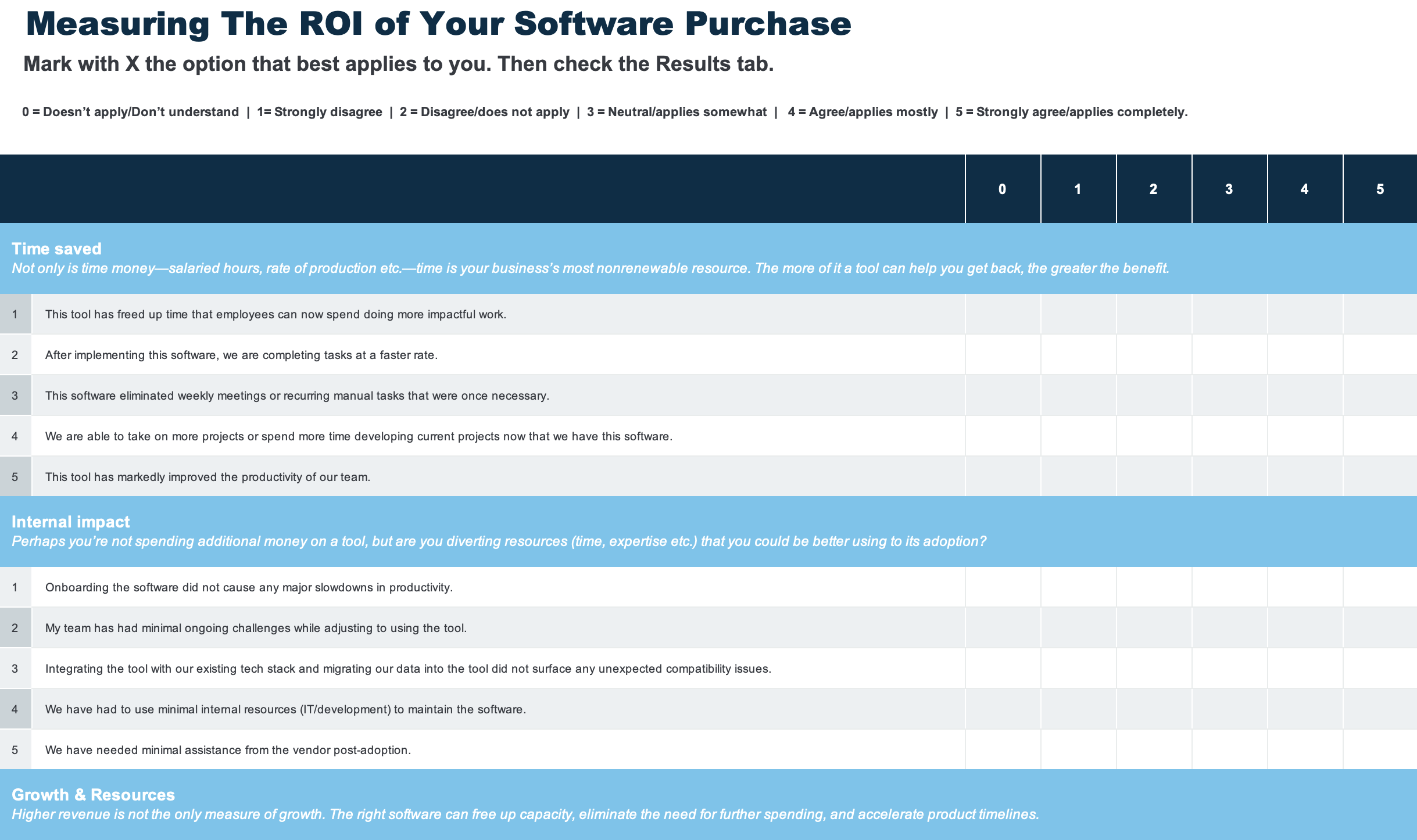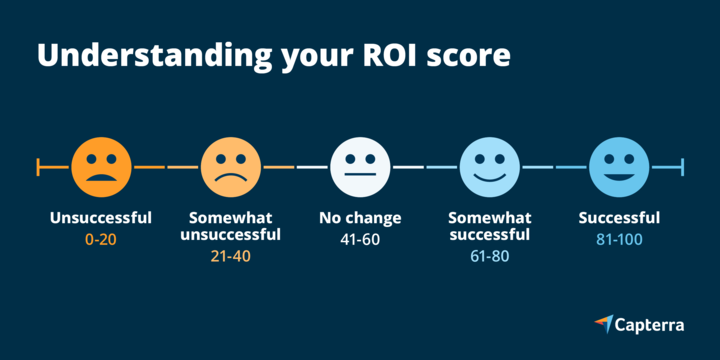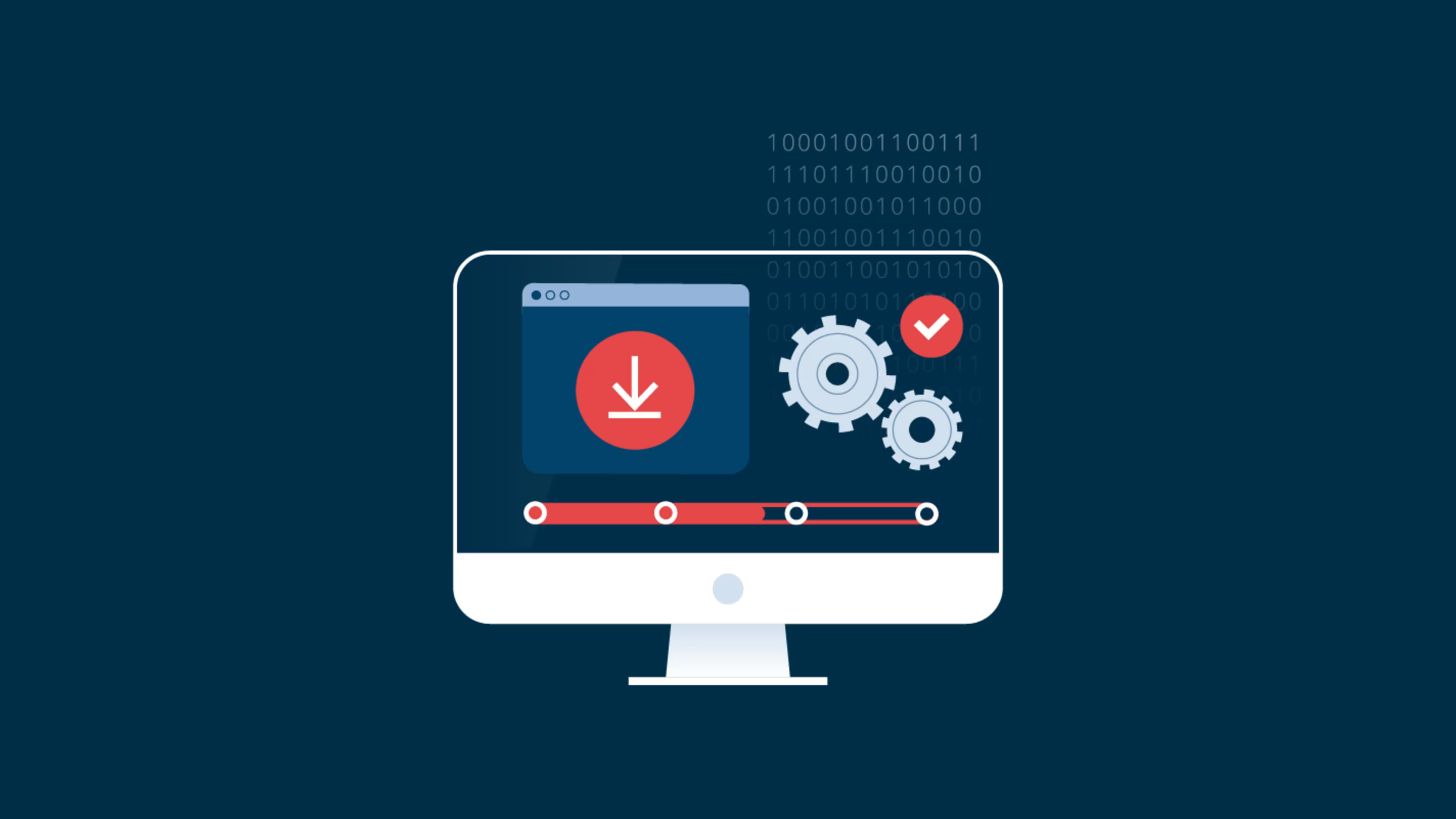After investing in software, you may be wondering if it was worth it. Use our software return on investment (ROI) assessment to get some perspective.
If you are a small business decision-maker who adopted new software within the last year, you’re probably looking for ways to measure the success of your software implementation. According to Capterra’s 2023 SMB Tech Trends Survey*, struggling to prove a positive return on investment (ROI) is one of the top three reasons why 33% of software buyers experience buyer's remorse.
You might be feeling this too: You’ve already invested a lot of time, money, and resources to implement your new platform, and now you might be wondering if you made the right choice. To prove a positive ROI, you need to take into account both objective and subjective ways to determine how successful this new software was in alleviating pain points and promoting growth and connectivity.
Success can look different for each company based on goals and key performance indicators (KPIs), but let’s take a look at what all small to midsize businesses (SMBs) should be thinking about when measuring the success of their software adoption.
We’ve even created a handy assessment to help you figure it out.
Free download
Jump to our free downloadable calculator and measure the ROI of your software purchases.
What to consider when calculating ROI
There is no one factor to consider when measuring the success of software implementation, but here are some general things to keep in mind.
Resources (time and money) saved
Your people are also capital, and their salaries are expensive investments. When measuring success, think about dollars saved.
Perhaps this new software is automating tasks, which allows salaried employees to do more impactful work. Or, it might be giving them the ability to complete tasks faster. Think about how the new software is changing your employees’ work days.
Consequences of not having the tool
Why did you decide to invest in the platform in the first place? Some software platforms are preventative and act as an insurance policy.
For example, if you invested in security software, you might not see a lot of returns, but that could mean it’s just in the background, quietly doing its job. Or perhaps, there are potential compliance-based fines your business would have to pay if the software wasn’t keeping track for audits.
Sometimes the return on software investments is subtle but critical to your business’s success.
Percentage of growth made possible
Measuring ROI is a long-term process, and growth is gradual—you may not see returns on your investment immediately. Perhaps you decided to invest in software because you noticed projects experiencing delays due to poor communication. Have projects been going more smoothly since software implementation?
Or perhaps you’ve noticed that your team was spending too much time on repetitive daily tasks such as scheduling or sending follow-ups. Since you invested in software to automate these tasks, how has it freed up employees’ time to work on more important tasks?
By assessing the ROI of your software regularly, perhaps annually or biannually, you’ll be able to see returns over time. How much faster were you able to grow after adoption?
Unquantifiable benefits
Some benefits of software can’t be so easily measured. Your software purchase might be boosting productivity, making communication easier, and improving the cohesiveness in your company.
These benefits are helping your business grow but are doing so quietly in the background. The benefit of improved communication between teams, for example, will become more apparent over time and through the success of projects that require close collaboration between teams.
How to use our ROI assessment
Our ROI assessment takes all of these qualitative and quantitative factors into account to help you see a holistic picture of how impactful your software purchase has been on your business.
To get the most accurate results, make sure that the person who fills out the assessment is someone who has been closely involved in the software adoption process and has insights into all the ways the tool is used in your company. You should also ensure that the tool has been used for no less than six months before trying out the assessment, to give your team plenty of time to adapt to it.

Screenshot of Capterra’s ROI Assessment
To use the assessment, read each statement made about time saved, internal impact, growth and resources, as well as consequences avoided, and determine how applicable they are to your experience. Then enter an “X” next to the response that most accurately reflects your experience, from zero (Doesn’t apply) to five (Applies completely).
Once you’ve completed the assessment, you’ll be issued a total score between zero to 100 that you can plug into the “Results” tab to see how high the return on your investment has been.
Understanding your ROI score
Now that you’ve taken the assessment, let’s talk about your score and what it means about the success of your software adoption.

81-100: Successful
The software you’ve adopted is meeting your expectations and contributing to growth in your business. The tool seems to work in harmony with your team, is successfully integrated into your tech stack, and performs well with limited need for additional resources and time spent on troubleshooting or upkeep. It sounds like you found a great fit for your business.
But don’t click out just yet. Just because this tool is working as a well-oiled machine now doesn’t mean your needs may not change based on evolving technology, industry trends, or changing market dynamics. It’s good practice to reassess your business needs annually—or even quarterly—to identify new features you might want to add or other tools that would be a better fit.
Since you knocked it out of the park with this software selection, use this win to make the case for other software purchases that could further benefit your business.
61-80: Somewhat successful
The software you’ve adopted appears to be well integrated into your team, and you are already seeing some improvements in your business, thanks to the tool’s involvement. However, it’s likely that you could be getting even more out of your investment, which could contribute to further growth. There is opportunity here to determine how you could be fully optimizing the software or engaging your team further in its application.
It could be as simple as ensuring that the tool is communicating properly with the other software in your tech stack or polling your workforce to uncover any snags they face when using the tool. Your vendor may even provide helpful resources such as webinars, training videos, and user forums to help inspire new ways to use the tool.
41-60: No change
The good news is that the tool you’ve adopted is not a detriment to your team, but it is also not moving the needle forward. The features you’re using might not be directly solving any of your business’s pain points, or your team might not understand the best way to use it. With some restructuring, the tool still has potential to be an asset to your team.
A good place to start would be to check in with your IT team, and determine if there are any compatibility issues with the rest of your tech stack. If there are available analytics within your system, you should be able to use them to identify areas in which your company could more efficiently use the software to your advantage. It’s also helpful to go back to basics, determine the features you’d like to prioritize in order to help you meet your goals, and come up with an action plan to set the tool up for success.
If your team is having trouble adjusting to the new tool, try out some of these tips for maximizing user adoption.
21-40: Somewhat unsuccessful
All hope is not lost—this tool still has potential for you, but it is not currently helping you achieve any wins and could actually be causing some organizational drag. It’s possible that additional employee training is required, that the tool needs to be better optimized, or you may need to rethink your strategy around how it’s used.
If you’ve assigned an onboarding champion for this purchase, have them check in with your team to get a sense of their experience using the tool. If it seems like additional training is needed, try out these business-tested ways to make training stick. If you’re running into roadblocks that you’ve been unable to find internal workarounds for, present these pain points to the vendor to see what creative solutions are possible.
0-20: Unsuccessful
The returns on your software investment have been minimal to non-existent. This tool does not seem to help you save time, grow as a business, or prevent any unwanted consequences within your workforce. It’s likely that the tool does not communicate well with the other software in your tech stack, it is difficult for your team to use, or doesn’t have the features you require.
It would be well worth your time to go back to the drawing board and reassess your business needs. By mapping these needs to software features, you will find a more successful solution for your business. Make sure you’re collecting feedback on your employees’ practical experience using the tool in order to avoid any of the same pitfalls.
There’s more than one way to show ROI
By learning how to gauge ROI on your past software purchases, you’ll be better able to know when it’s time to switch platforms or justify future software purchases. If a software purchase reveals a high ROI, you’ll know that the investment decision was a solid one.
But if a software purchase reveals a low ROI, you’ll know that it is time to stop investing and switch to a different platform that better suits your needs. There are multiple ways to prove ROI, and using our assessment tool can be a good place to start.
